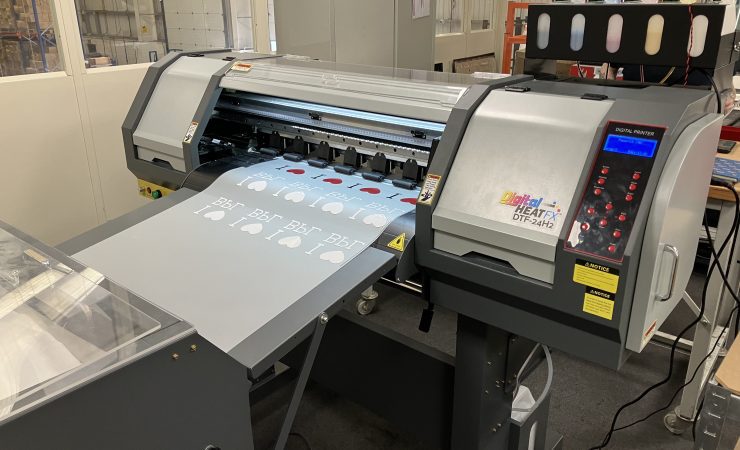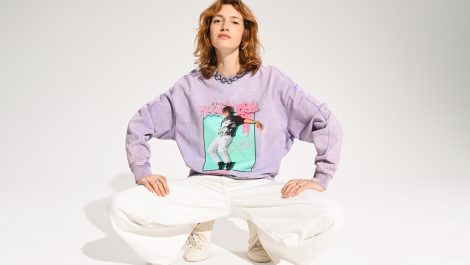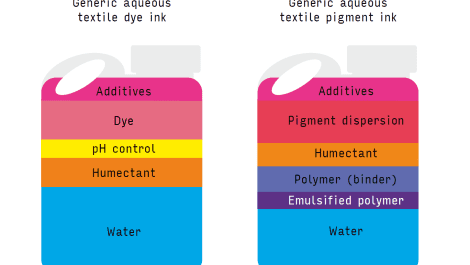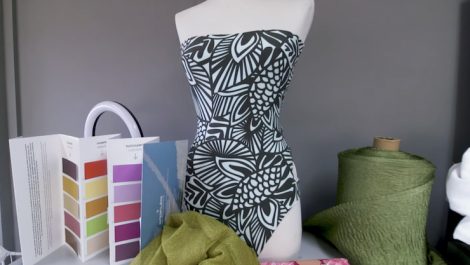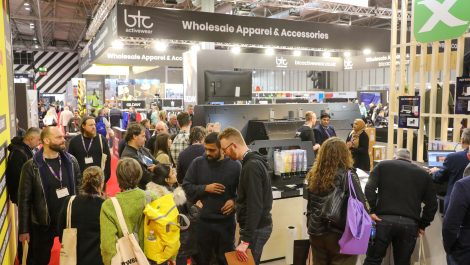Founded during the Covid lockdown periods, when gift shops and events had to close, Merchr was designed to allow businesses to move online, without having to get into the logistics of stocking and shipping. Michael Walker went to see.
The idea behind Merchr was to allow anyone to sell merchandise, from bands and social media influencers to sports teams, charities, educational institutions and boutique stores, explains co-founder and head of e-commerce Jack Fox. The products covered includes a variety of printed textile products, from caps and T-shirts to tote bags, hoodies and back packs. This is supported by a range of complementary products like power banks and earphones, desk and office items such as notebooks, pens, pencils, pouches and highlighters, water bottles, tumblers and souvenirs.
Not everything is printed digitally; during the Covid period existing trade supplier Product Source was acquired, in order to support big retailers’ desire for drop shipping, working with brands such as Next, Pretty Little Thing and JD Williams. This part of the business has an impressive armoury of screen and pad printing equipment, churning out items like branded pens and mugs at the rates of thousands per hour.
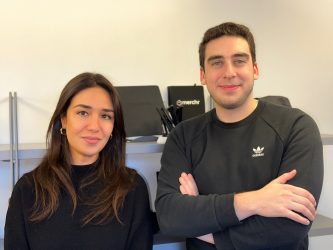
Nora Yassin and Jack Fox, co-founders of Merchr – set up an e-commerce store in less than eight minutes
Since Covid, the products are put on the websites and Merchr/Product Source does the fulfilment. ‘Retail customers want the option of small quantities,’ explains Mr Fox, adding that direct-to-garment (DtG) printing was put in first, followed by the technical development of the Merchr Hub software, which took place over a period of about two years.
The Hub is now central to Merchr’s proposition. It integrates with e-commerce sites with Merchr’s own production facilities, plus those of other printers. ‘We want to offer as many high quality products as possible,’ explains Mr Fox. The typical target customer for the Merchr service could be a band or a social media influencer, but ‘we’re careful not to have tunnel vision,’ he notes, confirming that Merchr is in talks with various suppliers.
The software is built with APIs so that anyone with the necessary programming skills can connect to it. It was built from the ground up by the five developers that Merchr has in-house, though four of them are physically located in Ukraine, while one is based in the UK in Milton Keynes.
‘We have heard rockets on Zoom calls, ‘ reports Mr Fox, adding that the company has sent laptops and other equipment to its staff as they have needed it.
Lead developer Seth Regan handles the local liaison with the production facility in Middleton near Manchester. The only outsourced aspect of the software was the user interface. ‘Usability is essential; it needs to flow well, and the retail team needs to use it too, in order to demo it to retail customers,’ explains Mr Fox, saying that it follows the Shopify look and feel. This involves the use of techniques like using emailable links instead of forcing users to rely on passwords.
‘Transparency is important. We put in a lot of [job] status markers; a client may not want to use all of them but they are there if needed,’ says Mr Fox. Merchr customers can see job status, costs and profits. Artwork can be created in the Merchr system or uploaded, with options to add text for personalisation by the end-customer.
Brand and marketing coordinator Sarah O’Donovan says, ‘It gives the option to not spend up-front, but only pay when the item is sold’
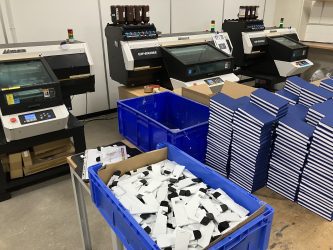
Various Mimaki flatbed printers are used to decorate both flat and cylindrical objects
Looking to the future, Mr Fox says the business is ‘impartial to the source of work. It will find its own way, people will use it differently, then work with their users to tailor it.’
Integration with the wider world of e-commerce is continuing too, with a Woo Commerce plug-in very recently approved for use with the Merchr system. This will allow front-end customisation to allow full design online. A Shopify app has been submitted too, which covers some 80% of the e-commerce space between it and the Woo one.
In its first week 120 Merchr-linked stores were set up with little marketing, Mr Fox reports, and before either the Woo Commerce or Shopify apps had been developed, just using the company’s own store development package, promoted solely through Google ads. The business has attracted further investment recently to take its plans forward.
Workshop
The equipment in use at Merchr includes a Trotec laser engraver with various jigs to handle items like candle pot lids, key rings and coasters. There is a Digital Heat FX DTF-24H2 direct-to-film (DtF)printer, and two Brother GXT 6000 DtG printers which require garments to be pre-treated and pressed. These work on white or neutral coloured garments such as hoodies, tote bags and T-shirts. DtF is used for nylon items, with various sizes of heat press. There’s constant experimentation with stock – some brands of caps for example, wouldn’t print well with DtF because of raised seams or creases, for example.
A ColorReel variable colour thread embroidery system is used, which although it greatly simplifies the requirement for artwork, being in effect a continuous tone colour printer, took some six months to get working correctly. The digital technology is complemented by some decidedly old school but effective hot foil stamping equipment, including metal type, for adding names to diaries and notebooks.
A fleet of Mimaki flatbed UV printers is in use, for both large and small items, including the ‘kebab’ which can print cylindrical objects like water bottles. An alternative approach is to print two strips on a flatbed printer, one down each side of bottle. This doesn’t give the full coverage of the circumference but is considerably quicker and is adequate for some applications.
Production monitoring is done via Tableau, PromoServe and Merchr, but Mr Fox says Merchr is being developed to replace the other two, ‘so it’ll be fully end-to-end right from the customer to the individual print machine,’ he says.

